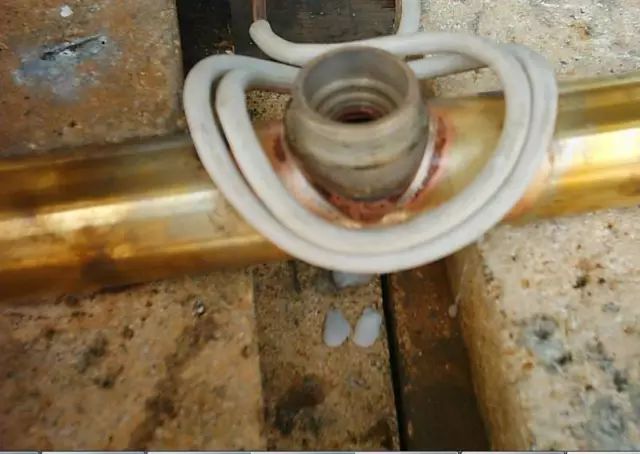Location:Home / News / Brazing properties of copper and its alloys
Copper and copper alloys can usually be divided into four categories: pure copper, brass, bronze, and white copper. Their brazing performance mainly depends on the stability of the surface oxide film and the effect of brazing heating process on material properties

Solderability of pure copper
Copper oxide and cuprous oxide may form on the surface of pure copper. These two types of copper oxides are easily reduced by reducing gases and can also be easily removed by brazing flux. Therefore, the brazing performance of pure copper is very good. To prevent hydrogen embrittlement, brazing cannot be carried out in a reducing atmosphere containing hydrogen.
Brazing properties of brass
When the zinc content in brass is less than 15%, the surface oxide is mainly composed of Cu2O, with only trace amounts of ZnO; When the zinc content is greater than 20%, the oxide film is mainly composed of ZnO. Although ZnO is relatively stable, it is not difficult to remove.
The manganese oxide on the surface of manganese brass is relatively stable and difficult to remove; The oxide film on the surface of aluminum brass is more difficult to remove, and a highly active brazing flux should be used to ensure the wettability of the brazing material. When the lead content in lead brass reaches 3%, lead will seep out of the surface at the brazing temperature, deteriorating the wetting and spreading of the brazing material. At the same time, lead brass also has a tendency to self crack.
Brazing properties of bronze
Two types of oxides are generated on the surface of tin bronze: SnO2 is present in the inner oxide layer; The outer layer is mainly composed of copper oxides. CdO is often present on the surface of cadmium bronze. SnO2 and CdO are both easy to remove. SiO2 is generated on the surface of silicon bronze. Stable BeO oxide is generated on the surface of beryllium bronze. Cr2O3 may form on the surface of chromium bronze. Although silicon oxide, chromium oxide, and beryllium oxide are relatively stable, they are not difficult to remove. However, aluminum bronze with a mass fraction exceeding 10% may form Al2O3 on the surface, which is difficult to remove and requires the use of specialized brazing fluxes. In addition, silicon bronze has a tendency towards thermal brittleness and self cracking under molten brazing materials.
4. Brazing properties of white copper
The inner layer oxide of nickel alloy is NiO, and the outer layer is copper oxide, both of which are easy to remove. It should be noted that phosphorus free brazing materials should be selected for brazing. If correct process measures are not taken, this alloy may develop self cracking under the melting of brazing materials.
In short, copper and the vast majority of copper alloys are relatively easy to braze. Copper alloys containing only aluminum are difficult to braze due to the formation of aluminum oxide.
Hard brazing materials and fluxes
When brazing copper, brass brazing material, phosphorus brazing material, and silver based brazing material can be used. Silver based brazing materials have a moderate melting point, good processability, and good mechanical, electrical, and thermal conductivity properties, making them widely used as hard brazing materials. When brazing brass with high copper content, silver based brazing materials, copper phosphorus brazing materials, and copper zinc brazing materials with high zinc content can be used. For brass with high zinc content, such as H62 brass, copper phosphorus brazing materials and silver based brazing materials are mainly used.
In copper zinc brazing materials, the mechanical properties of the joints brazed with BCu58ZnFe-R and BCu60ZnSn-R brazing materials are good.
Copper phosphorus, silver copper phosphorus, and silver copper tin brazing materials have a self fluxing effect, and have good wettability on copper without the addition of fluxes. The joint plasticity of silver copper phosphorus and silver copper tin brazing materials is better.
When brazing copper and brass with silver brazing material, high-performance joints can be obtained. Among these silver brazing materials, BAg45CuZn brazing material has good comprehensive performance. In silver copper zinc cadmium brazing materials, BAg40CuZnCd has a low melting point, good processability, and high joint strength, but the impact toughness of the joint is lower than that of silver brazing materials without cadmium.
When brazing copper with brass, borax or 75% boric acid+25% borax can be used as the brazing flux.
When brazing copper and copper alloys with silver based brazing materials, using QJ101 or QJ102 can achieve good results. Braze beryllium bronze and silicon bronze using QJ102. When brazing with silver copper zinc cadmium brazing materials (BAg40CuZnCd, BAg50CuZnCd), QJ103 should be used.
When brazing aluminum bronze, sodium silicate with a mass fraction of 10% -20% or YJ-6 with a mass fraction of 10% -20% can be added to the brazing flux. This can effectively remove the oxide on the surface of the workpiece.
Popular products
News recommendations
Classification and common problems of shield tunneling tools2020-09-14
The cutting tools of shield tunneling machines can be classified according to their movement mode, arrangement position, method, and shape. According …
New type of aluminum alloy brazing material2020-09-14
The new brazing material and flux have a lower brazing temperature, which shortens the flow and filling time of the brazing material, lowers the brazi…
Brazing of aluminum and aluminum alloys2020-09-14
It should be pointed out that the process brazing performance of materials cannot be changed. With the development of brazing technology, new brazing …
Classification of brazing materials and flux2020-09-14
The main metal element in soft solder is tin, followed by lead, bismuth, zinc, gallium, antimony, cadmium, silver, copper, etc. The different combinat…
 If you have any questions or suggestions about the product, or if you want to know more, you can contact us at any time.
If you have any questions or suggestions about the product, or if you want to know more, you can contact us at any time.

Mobile website
Our Product
Contact Us